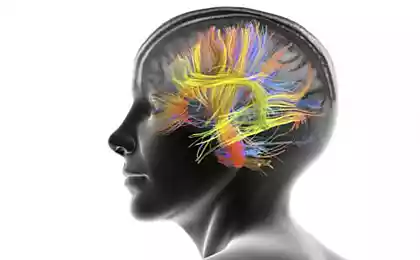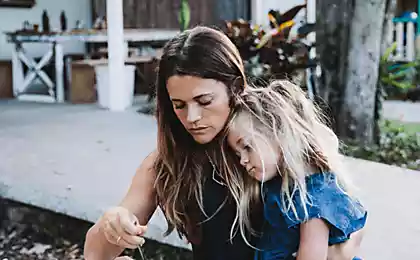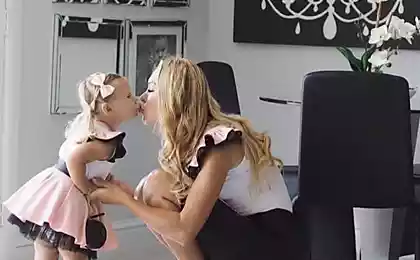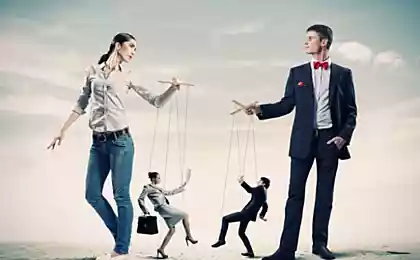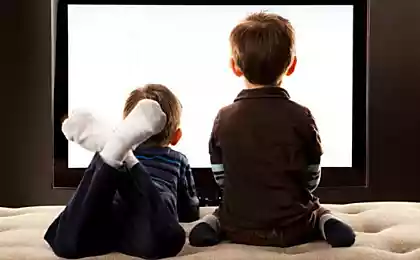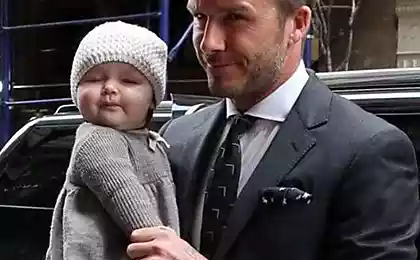532
What to do with a child who behaves badly?
Let's separate flies from cutlets. Often we believe that behavior is the child. That is, it gets us Moody, stubborn, unmanageable. Although in reality he just behaves in a certain way. For example, do not always listen. Sometimes obeys immediately. Sometimes insists on his own – and is often uncomfortable for parents. Sometimes he shouts, when I want silence. Sometimes it requires too much attention. And so on.
Twenty four million four hundred eighty eight thousand three hundred four
But we believe that it is our child. That he is. Spoiled, arrogant, stubborn. What we would then need a strap. Or I could not buy him video games. And if you remember your childhood, then there will be even clearer:
What is the reason? Parents just not given the knowledge of the behavior about how to change it, what its causes are and how to influence it. And how to react to it.
Now there is a whole science about behaviour – behavioural analysis. It is particularly relevant for children with special needs, where behaviour problems anymore. Where a normal child can agree, special often behaves the same way and does not respond to persuasion.
But with normal children it is also applicable. And how. The result can be obtained much faster to see the effectiveness of the method.
Let's briefly the point. We have just started to learn the basics, apply to children. More attention, of course, give the older behavior, and learning in this context. Because it is difficult to understand, to see the connection and change. But over a month we have seen the results. Share important understandings for themselves.
The main (in my opinion) moments
1. Separate the child from the behavior
It's not a kid uncontrollable, it's his behavior. And the more specific we describe what it means to "unmanaged", the easier it is on something to do with it. For example, on the street does not listen – so the first time never reacts with sites goes always with fight, run and so on.
Not stubborn and headstrong and have an opinion on many issues – what to wear, what to eat, where to go, what to do. With their desires and brightly defending them. This is already the behavior, is less clear. And "stubborn" and "unmanaged" is like a label, a diagnosis for life. So after we get used to consider myself a clumsy, untidy and ugly.
2. Behavior is a symptom.
The child's behavior is his way to Express yourself. And problem behavior can help you understand where and what the problem is.
Although often the connection is indirect. For example, the child may be naughty for different reasons. For example, the child has no attachment to parents is a separate issue, well described in the book Gordon Neufeld "don't miss their children." Or child is used to attention from parents during your disobedience in a certain way – physical contact, fulfillment of desires.
It is important to understand what our symptom where our relationship with the child is sick. Where and what we are to each other do not give, or give too much. One of the exercises the course was, for example, to track how many times a day we are joyfully and enthusiastically tell the child "Yes!". That is not just build with him and draw, and agree with burning eyes. Because it's hot "No," we have been spoken dozens of times. For me it was sad to realize that my "Yes" to children is usually dry and formal.
3. Every behavior has a purpose.
Once the child attracts attention, once he avoids any action, once it achieves the goals (a new toy). And so on.
For example, there is such a situation when mother works hard, and the baby receives less attention. But at home after work mom is not able to play. She is lying and asks her not to touch. And often she can allow the child to do anything, if only it didn't hurt her. But when guests come home, everything changes. Mom so there is no force on the child, but she did not care what is happening around.
Twenty four million two hundred sixty six thousand one hundred thirty three
The child that sees, understands and enjoys. Starts to moan, to carry all my sadikovski crafts. While there is a chance that they will notice. Or upset, stopping to chat, climbing to his knees. Because in this moment the mother will have to pay attention to him. In a positive shape, smiling and talking with him. Or in a negative, punishing, naruga over that interferes. In any case, will not remain indifferent.
When we see the goal behavior, we can achieve this goal differently.
To pay more attention to the child, especially before the arrival of the guests. To prevent the development of conflict and tantrums.
4. Recognize problem behavior.
It is important to understand exactly what problem for you. The child has a lot to do, but something you particularly exhausting, annoying, depressing. Here again, it is important to understand very specifically – in what situations and what the child is doing. As specific as possible. For example, does not want to go out for a walk, running, not getting dressed, not to wear myself, crying, screaming. Or in cases where he has taken or want to take toy – pounce with fists – bites, bites and so on.
Behavior it is important to describe as specific as possible. In order to better understand themselves. And to see the progress. If the child that the toys are always biting and pinching, suddenly stops biting – that's progress. Although the problem remains – he still fights and bites. But it is already clear that the road chosen is correct.
5. We observe this behavior.
This is the most interesting. Our teachers told a story about one teacher. It does not obey the children. She thought so. And specialist, to whom she turned, offered her such a method of observation. Put in one pocket matches. And if the children had not complied with her request and match to break. But if fulfilled – to shift it to another pocket.
It took some time, and the teacher summed up. Broken matches were only a few pieces. Very many requests were fulfilled. Not right away. Often the children did what they were asked after some time. And the teacher was not annoyed, as before, she was in the position of the observer – it was important to understand what to do with the match.
Just as we have. In the classroom we were given a form to fill in. Every time there's a behavior, you need to record the details. How long was that exactly happened, who was present. And instead of being irritated or indignant, what we're doing takes the time written details.
Watch. And some problematic things go away. The understanding of where and why. Because being inside, you do not exactly know and will not understand.
And most importantly – once to shout, to swear, not going through the roof emotions. Keep in mind – what to write? How many minutes have passed? What was I saying? What was he doing? Know it – and the behavior ended. I used to think that the collection of an older child that hour, no less. It turned out – 15 minutes tops. Yes, sometimes it's these 15 minutes, which is almost like an hour.
6. Conjecture
When You have a tablet of observations – it may be in free form — You can see the patterns. For example, several years ago we discovered that the new moon and full moon our eldest son can't control himself, he often became ill at night, he slept badly and had been naughty. We have reduced the load on it these days, tried to spend the day in nature and the symptoms went away. Because we saw the pattern.
Or do You see that in the morning Your child is fine, he has a lot of energy, he likes it. And in the evening it is on anything can not concentrate. Then You all classes formed for him in the morning, leaving the night quiet games.
Or do You see that before you go to the store, need baby tightly and tasty to feed, then simply passes the struggle with sweets and whims. That is, the hungrier the child, the more whims. Remove the hunger – the problem with behavior.
Thirty two million five hundred sixty four thousand nine hundred forty three
We, for example, the eldest son try a good scratch before leaving the house and after returning. Collecting it in a pile, after a huge number of impressions.
You may find that he is afraid of certain people, sounds, sensations, places. Or that it is strongly influenced by your emotions (that in all cases, even without observations) .
7. Often the child's behaviour is a mirror of your emotions.
For example, mom and dad had a fight. And the child may act up, destroy everything, be aggressive. Aggression, you can't show parents for ethical reasons, for example. When You are tense, the child is also stressed. The more relaxed You are – the calmer he is.
Than confident and calm you deny him the store, the easier it is to accept rejection. If You just like a spring, and very afraid of his concert – hysteria you provided. He feels it and as the same spring shoots. Not so much because of the toys, but because of your inner tension.
8. To see the features and needs of the child
For example, we found that the eldest son should be given more time. But not on the charges, he dresses quickly. And the fact that he decided to gather. Give him a break, wait. Sometimes – to give a choice.
Another important point, especially for special children – can be a visual cue. The pictures show where we were going and why. Because it is clear to us that such a Park or Playground. And the Association may be others. What specifically in the Park? Large, where many ducks and bridges? Or small in the centre of the city, where children are more than trees? Agree, this is a big difference.
Again Pro features – learning from Ruslan Narushevich information about the moon signs, we began to apply it to children. Because most of their needs already studied for many thousands of years before us. And we just see how it works. As the flip side of artistry and emotion Matthew is his vulnerability and sensitivity, attachment to the mother. Once he was on the Playground next to the cafe, played with the boy. And when the boy left with her mom, our son began to worry, began to look for us, but not in a cafe. He began to look for us there, where did the boy's mother. And then cried because he lost his mother.
Danilka have a king. And so he did something very important that he decided to do it. That he wanted allowed. If you take him out of the house not to agree, even the most beloved Park will be rejected. Despite his love of the sea he won't swim and dig in the sand, if not agreed.
Child — personality. Even in two years, three, he has his own opinion, his features.
He was born with them, and the sooner we can understand and accept, the easier it will be to live together and help each other become better. Children is a training of personal growth and life-long. And when more than one – you can see that they are born that way. As they then will. During pregnancy and time of birth, the child shows its own characteristics and needs. When our expectations are not obscure for us the child – this often happens when a lot of children – we can feel, understand and accept. And to calm down.
And actually, if a child is taken for what it is and not to change, and to help it grow, behavior problems will be less. The behavior is just a symptom. Which has a goal – to be loved, seen, understood. Almost any goal one way or another come down to this. published
Author: Olga Valyaeva
P. S. And remember, just changing your mind — together we change the world! ©
Join us in Facebook , Vkontakte, Odnoklassniki
Source: www.valyaeva.ru/chto-delat-s-rebenkom-kotoryj-vedet-sebya-ploxo/
Twenty four million four hundred eighty eight thousand three hundred four
But we believe that it is our child. That he is. Spoiled, arrogant, stubborn. What we would then need a strap. Or I could not buy him video games. And if you remember your childhood, then there will be even clearer:
- Do not clean the house? You pig!
- Going for a long time? Dawdler!
- Dropped food on myself? Slut!
- Do not understand mathematics? Dullard!
- Threw a tantrum? Hysterical! (well, at least there's something logical?)
- Have your own opinion? Need it from your beating with a belt!
What is the reason? Parents just not given the knowledge of the behavior about how to change it, what its causes are and how to influence it. And how to react to it.
Now there is a whole science about behaviour – behavioural analysis. It is particularly relevant for children with special needs, where behaviour problems anymore. Where a normal child can agree, special often behaves the same way and does not respond to persuasion.
But with normal children it is also applicable. And how. The result can be obtained much faster to see the effectiveness of the method.
Let's briefly the point. We have just started to learn the basics, apply to children. More attention, of course, give the older behavior, and learning in this context. Because it is difficult to understand, to see the connection and change. But over a month we have seen the results. Share important understandings for themselves.
The main (in my opinion) moments
1. Separate the child from the behavior
It's not a kid uncontrollable, it's his behavior. And the more specific we describe what it means to "unmanaged", the easier it is on something to do with it. For example, on the street does not listen – so the first time never reacts with sites goes always with fight, run and so on.
Not stubborn and headstrong and have an opinion on many issues – what to wear, what to eat, where to go, what to do. With their desires and brightly defending them. This is already the behavior, is less clear. And "stubborn" and "unmanaged" is like a label, a diagnosis for life. So after we get used to consider myself a clumsy, untidy and ugly.
2. Behavior is a symptom.
The child's behavior is his way to Express yourself. And problem behavior can help you understand where and what the problem is.
Although often the connection is indirect. For example, the child may be naughty for different reasons. For example, the child has no attachment to parents is a separate issue, well described in the book Gordon Neufeld "don't miss their children." Or child is used to attention from parents during your disobedience in a certain way – physical contact, fulfillment of desires.
It is important to understand what our symptom where our relationship with the child is sick. Where and what we are to each other do not give, or give too much. One of the exercises the course was, for example, to track how many times a day we are joyfully and enthusiastically tell the child "Yes!". That is not just build with him and draw, and agree with burning eyes. Because it's hot "No," we have been spoken dozens of times. For me it was sad to realize that my "Yes" to children is usually dry and formal.
3. Every behavior has a purpose.
Once the child attracts attention, once he avoids any action, once it achieves the goals (a new toy). And so on.
For example, there is such a situation when mother works hard, and the baby receives less attention. But at home after work mom is not able to play. She is lying and asks her not to touch. And often she can allow the child to do anything, if only it didn't hurt her. But when guests come home, everything changes. Mom so there is no force on the child, but she did not care what is happening around.
Twenty four million two hundred sixty six thousand one hundred thirty three
The child that sees, understands and enjoys. Starts to moan, to carry all my sadikovski crafts. While there is a chance that they will notice. Or upset, stopping to chat, climbing to his knees. Because in this moment the mother will have to pay attention to him. In a positive shape, smiling and talking with him. Or in a negative, punishing, naruga over that interferes. In any case, will not remain indifferent.
When we see the goal behavior, we can achieve this goal differently.
To pay more attention to the child, especially before the arrival of the guests. To prevent the development of conflict and tantrums.
4. Recognize problem behavior.
It is important to understand exactly what problem for you. The child has a lot to do, but something you particularly exhausting, annoying, depressing. Here again, it is important to understand very specifically – in what situations and what the child is doing. As specific as possible. For example, does not want to go out for a walk, running, not getting dressed, not to wear myself, crying, screaming. Or in cases where he has taken or want to take toy – pounce with fists – bites, bites and so on.
Behavior it is important to describe as specific as possible. In order to better understand themselves. And to see the progress. If the child that the toys are always biting and pinching, suddenly stops biting – that's progress. Although the problem remains – he still fights and bites. But it is already clear that the road chosen is correct.
5. We observe this behavior.
This is the most interesting. Our teachers told a story about one teacher. It does not obey the children. She thought so. And specialist, to whom she turned, offered her such a method of observation. Put in one pocket matches. And if the children had not complied with her request and match to break. But if fulfilled – to shift it to another pocket.
It took some time, and the teacher summed up. Broken matches were only a few pieces. Very many requests were fulfilled. Not right away. Often the children did what they were asked after some time. And the teacher was not annoyed, as before, she was in the position of the observer – it was important to understand what to do with the match.
Just as we have. In the classroom we were given a form to fill in. Every time there's a behavior, you need to record the details. How long was that exactly happened, who was present. And instead of being irritated or indignant, what we're doing takes the time written details.
Watch. And some problematic things go away. The understanding of where and why. Because being inside, you do not exactly know and will not understand.
And most importantly – once to shout, to swear, not going through the roof emotions. Keep in mind – what to write? How many minutes have passed? What was I saying? What was he doing? Know it – and the behavior ended. I used to think that the collection of an older child that hour, no less. It turned out – 15 minutes tops. Yes, sometimes it's these 15 minutes, which is almost like an hour.
6. Conjecture
When You have a tablet of observations – it may be in free form — You can see the patterns. For example, several years ago we discovered that the new moon and full moon our eldest son can't control himself, he often became ill at night, he slept badly and had been naughty. We have reduced the load on it these days, tried to spend the day in nature and the symptoms went away. Because we saw the pattern.
Or do You see that in the morning Your child is fine, he has a lot of energy, he likes it. And in the evening it is on anything can not concentrate. Then You all classes formed for him in the morning, leaving the night quiet games.
Or do You see that before you go to the store, need baby tightly and tasty to feed, then simply passes the struggle with sweets and whims. That is, the hungrier the child, the more whims. Remove the hunger – the problem with behavior.
Thirty two million five hundred sixty four thousand nine hundred forty three
We, for example, the eldest son try a good scratch before leaving the house and after returning. Collecting it in a pile, after a huge number of impressions.
You may find that he is afraid of certain people, sounds, sensations, places. Or that it is strongly influenced by your emotions (that in all cases, even without observations) .
7. Often the child's behaviour is a mirror of your emotions.
For example, mom and dad had a fight. And the child may act up, destroy everything, be aggressive. Aggression, you can't show parents for ethical reasons, for example. When You are tense, the child is also stressed. The more relaxed You are – the calmer he is.
Than confident and calm you deny him the store, the easier it is to accept rejection. If You just like a spring, and very afraid of his concert – hysteria you provided. He feels it and as the same spring shoots. Not so much because of the toys, but because of your inner tension.
8. To see the features and needs of the child
For example, we found that the eldest son should be given more time. But not on the charges, he dresses quickly. And the fact that he decided to gather. Give him a break, wait. Sometimes – to give a choice.
Another important point, especially for special children – can be a visual cue. The pictures show where we were going and why. Because it is clear to us that such a Park or Playground. And the Association may be others. What specifically in the Park? Large, where many ducks and bridges? Or small in the centre of the city, where children are more than trees? Agree, this is a big difference.
Again Pro features – learning from Ruslan Narushevich information about the moon signs, we began to apply it to children. Because most of their needs already studied for many thousands of years before us. And we just see how it works. As the flip side of artistry and emotion Matthew is his vulnerability and sensitivity, attachment to the mother. Once he was on the Playground next to the cafe, played with the boy. And when the boy left with her mom, our son began to worry, began to look for us, but not in a cafe. He began to look for us there, where did the boy's mother. And then cried because he lost his mother.
Danilka have a king. And so he did something very important that he decided to do it. That he wanted allowed. If you take him out of the house not to agree, even the most beloved Park will be rejected. Despite his love of the sea he won't swim and dig in the sand, if not agreed.
Child — personality. Even in two years, three, he has his own opinion, his features.
He was born with them, and the sooner we can understand and accept, the easier it will be to live together and help each other become better. Children is a training of personal growth and life-long. And when more than one – you can see that they are born that way. As they then will. During pregnancy and time of birth, the child shows its own characteristics and needs. When our expectations are not obscure for us the child – this often happens when a lot of children – we can feel, understand and accept. And to calm down.
And actually, if a child is taken for what it is and not to change, and to help it grow, behavior problems will be less. The behavior is just a symptom. Which has a goal – to be loved, seen, understood. Almost any goal one way or another come down to this. published
Author: Olga Valyaeva
P. S. And remember, just changing your mind — together we change the world! ©
Join us in Facebook , Vkontakte, Odnoklassniki
Source: www.valyaeva.ru/chto-delat-s-rebenkom-kotoryj-vedet-sebya-ploxo/




